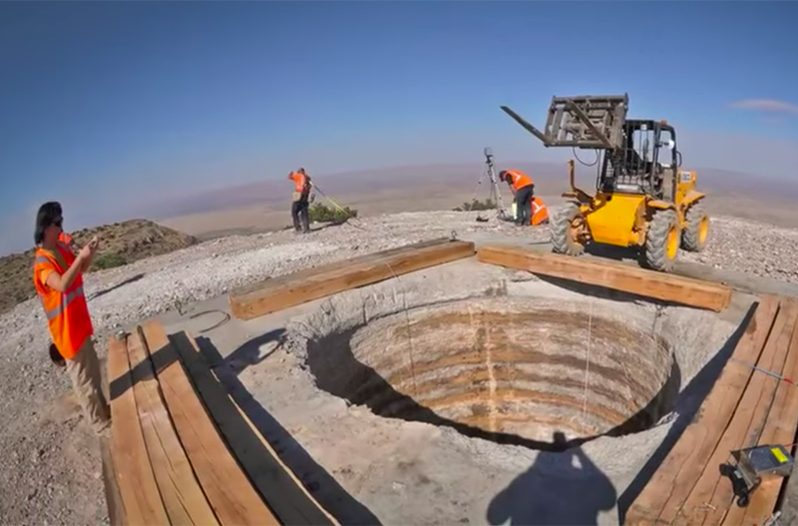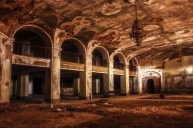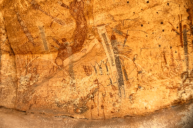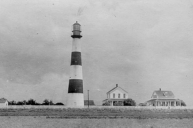[dropcap]D[/dropcap]eep within the tunneled out recesses of a mountain in West Texas, several computer scientists, engineers and inventors are creating something that could change the way the future looks at time.
Videos by Wide Open Country
Computer Scientist Danny Hillis first came up with the idea for a 10,000 year, self-maintaining clock in the early '90s and featured it in the 1995 "Scenarios" issue of Wired magazine. By 1999, he had an 8-foot-tall working prototype.
The full-size clock is being built in West Texas on land owned by Jeff Bezos, CEO and founder of Amazon, who is also actively helping to design the clock. Bezos, Hillis and others make up the geniuses behind the Long Now Foundation, who is behind the construction and conceptualization of the clock.
Why build it underground?
You might wonder why such a marvel of human invention would be buried deep within a mountain in the remote desert of West Texas. According to the Long Now Foundation, "For longevity a 10K year environment is more important than the artifact's material." The West Texas desert is a high and dry location, and underground where the clock is being constructed, there is little temperature variance. Think of the pyramids where tens of thousands of years old artifacts were discovered almost perfectly preserved. That's the goal with this clock.
How does it work?
Rather than measuring time in minutes and seconds, the clock measures time in centuries and millennia. The clock has a century hand, and includes a cuckoo that will sound every thousand years at each new millennium. The clock also is programmed to chime from time to time, and each time it chimes it is a unique sound that will never be repeated.
What is it made of?
The clock's materials had to be very carefully planned out, because over time, metals can fuse together, making the clock inoperable. So the clock's moving parts are made from marine-grade titanium, ceramic and stone.
What makes it tick?
The clock will run partially on solar power, and will be kept running by visitors to it over the years. The only part of the clock visible aboveground is the thermal timekeeping device, which is covered by a cupola of sapphire glass. Every day at noon, the hot Texas sun will heat up the solar synchronizer, thereby keeping the clock "on time" with true noon.
When the clock is completed, it will be opened to the public, who may visit its remote location and take turns winding it, which will also keep the clock running.
Who can visit it?
When the clock is completed, it will open to the public. (Construction began in 2018.) The first visitors to the clock will be members of the Long Now Foundation, but eventually it will be on display for anyone to see. The facility where it's kept is designed to be accessible by anyone who encounters it. It is also meant to be constructed in such a way that a person could figure out how it works by closely observing it.
Why build a 10,000 year clock?
The idea behind the Long Now Foundation is to get people to start looking to the future, to plan for the lives of our far future ancestors, who may never know our names. In a society that is obsessed with the current, it's difficult to visualize a society that exists thousands of years in the future. Danny Hillis and his colleagues hope to change that.
"I cannot imagine the future, but I care about it. I know I am a part of a story that starts long before I can remember and continues long beyond when anyone will remember me. I sense that I am alive at a time of important change, and I feel a responsibility to make sure that the change comes out well. I plant my acorns knowing that I will never live to harvest the oaks," Hillis has said of the clock.
There are currently other cultures that have begun projects they will never see completed in their lifetime, for example, living root bridges in India are cultivated and encouraged by locals. The information on how to create and care for them is handed down from generation to generation. That's the same principle behind this clock, to build projects that look to the future.
Hillis hopes that the clock will be the first of many built around the globe and throughout time.
This article was originally published in 2016.
Now Watch: The World's First Zipline Roller Coaster
https://rumble.com/embed/u7gve.v6d9vr/




